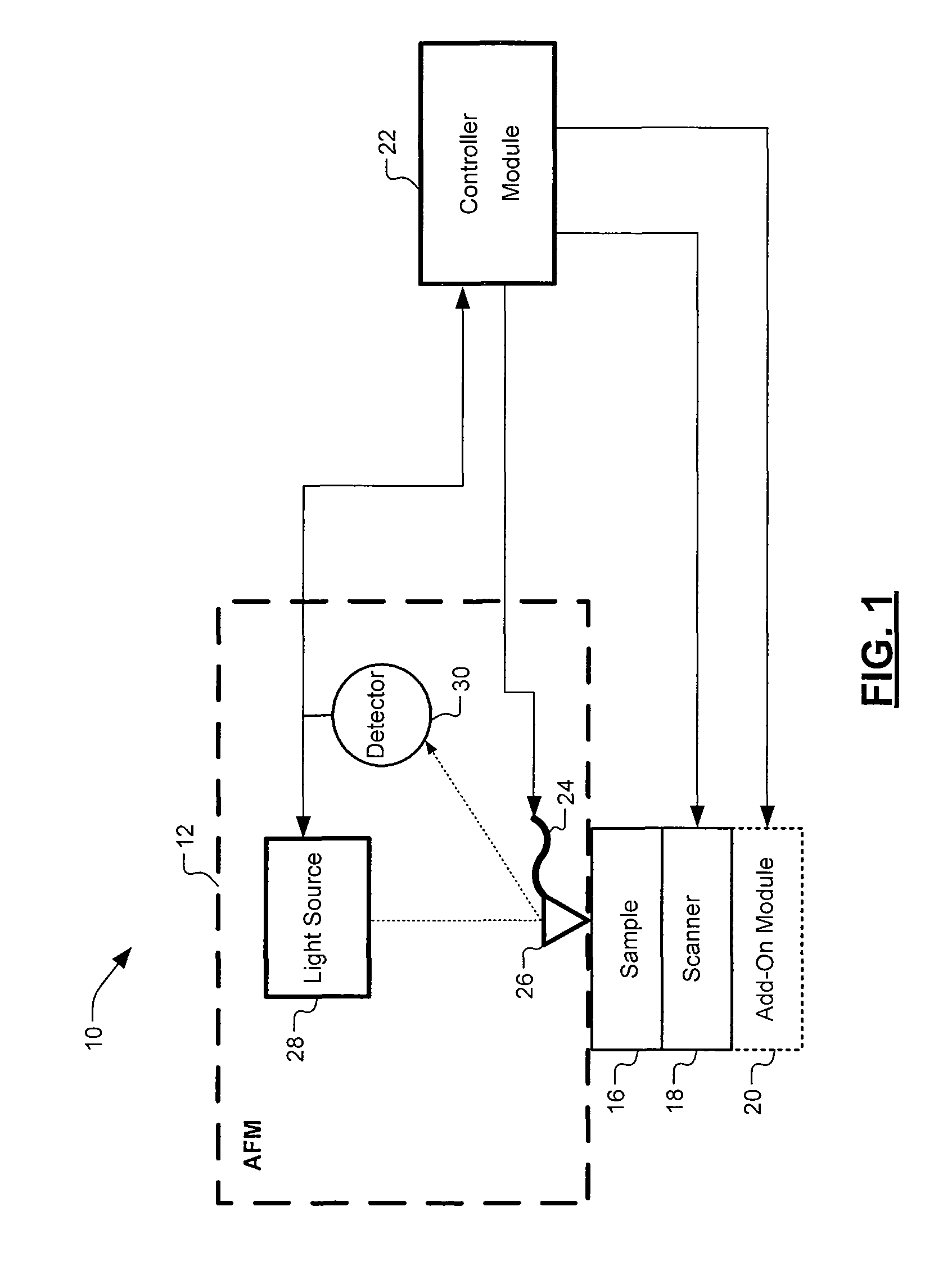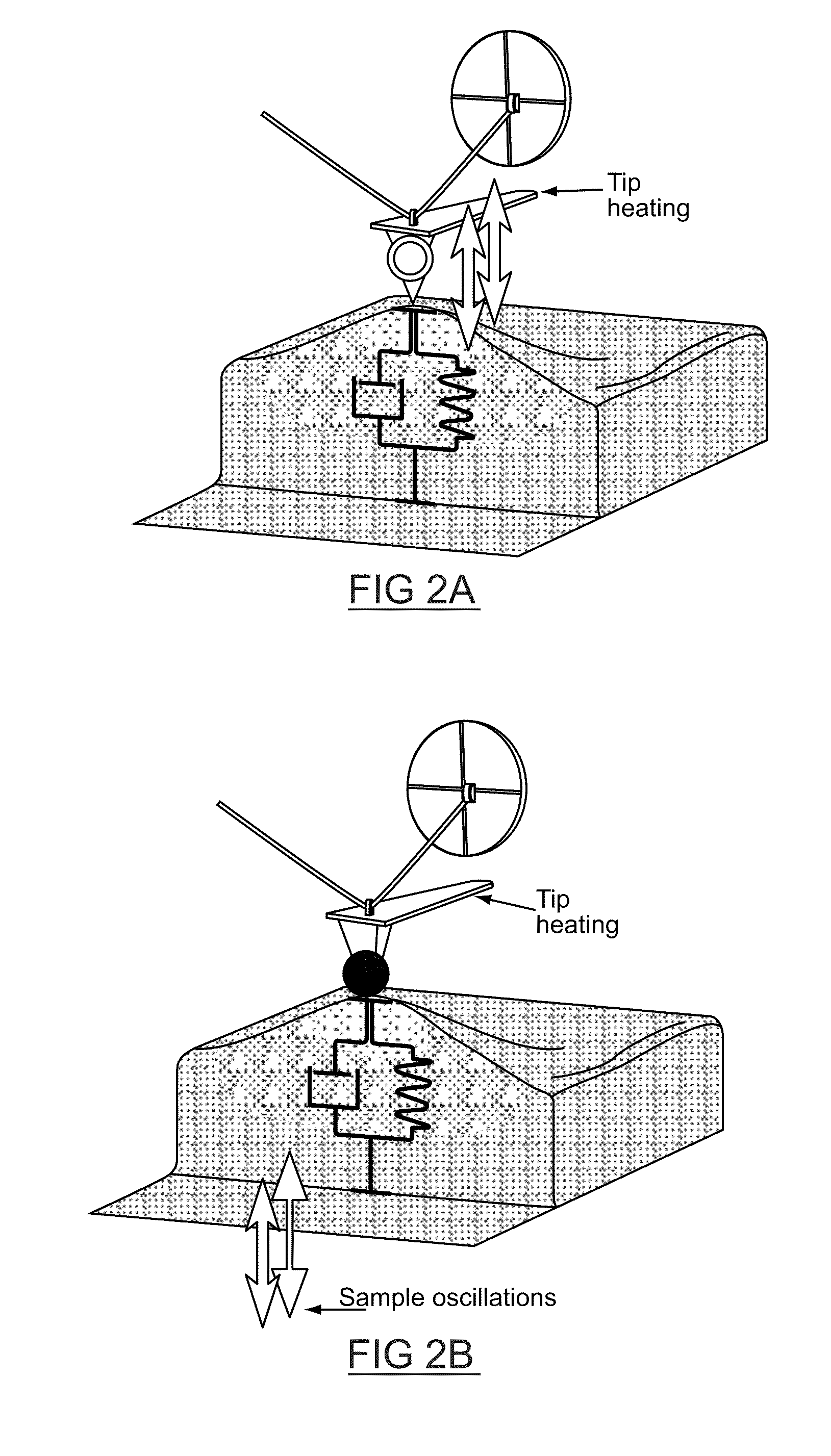Spatially resolved quantitative mapping of thermomechanical properties and phase transition temperatures using scanning probe microscopy
a scanning probe and quantitative mapping technology, applied in scanning probe techniques, instruments, heat measurement, etc., can solve the problems of difficult to obtain accurate measurements of spatially resolved mechanical properties, preventing a high-accuracy determination of the transition temperature of materials,
- Summary
- Abstract
- Description
- Claims
- Application Information
AI Technical Summary
Problems solved by technology
Method used
Image
Examples
Embodiment Construction
[0042]Scanning probe microscopy (SPM) based techniques may provide high resolution imaging of various material properties. Substantial efforts have been made into the characterization of thermomechanical properties of polymeric materials at the nanoscale using SPM based techniques. However, the application of SPM techniques for probing temperature or field-induced transitions and the mechanical properties associated with those transitions has been limited by a lack of quantitativeness and a lack of sensitivity to dissipative properties.
[0043]The lack of quantitativeness may be due to the insufficient control provided by some SPM techniques of the fundamental contact mechanics of the probe tip-to-sample surface junction, that may be referred to as the tip-surface junction, in which measurable mechanical responses such as pull-off force or resonance frequency shift depend substantially on contact radius. As such, relatively small changes in material properties are often masked by subs...
PUM
 Login to View More
Login to View More Abstract
Description
Claims
Application Information
 Login to View More
Login to View More - R&D
- Intellectual Property
- Life Sciences
- Materials
- Tech Scout
- Unparalleled Data Quality
- Higher Quality Content
- 60% Fewer Hallucinations
Browse by: Latest US Patents, China's latest patents, Technical Efficacy Thesaurus, Application Domain, Technology Topic, Popular Technical Reports.
© 2025 PatSnap. All rights reserved.Legal|Privacy policy|Modern Slavery Act Transparency Statement|Sitemap|About US| Contact US: help@patsnap.com



